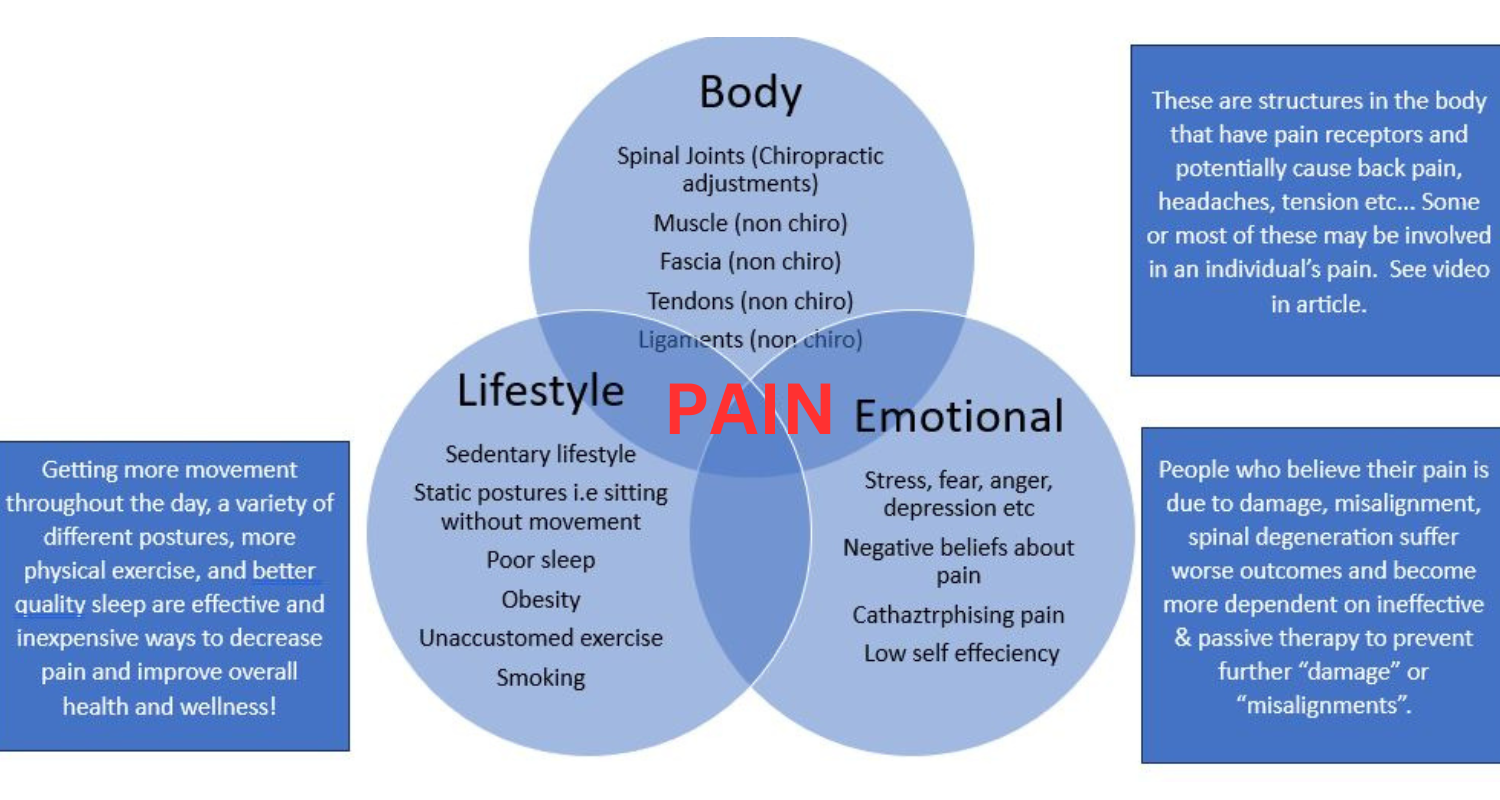I like to use a bucket and water analogy when describing pain in the body. As water is being poured into the bucket and the capacity of the bucket is reached, water will overflow and spill over the sides. Similar to the body, there may be several different physical, lifestyle & emotional stressors (see diagram) and once the body reaches past its tolerance to handle stress, pain may result. If you’re getting treatment, for example, a 10 minute chiropractor, who is isolating the treatment to the joints of the spine through adjustments, and not addressing all the other potential causes of pain (physical, lifestyle, emotional), how much water can they empty out of the bucket? Many find themselves in a position of having to return regularly, sometimes up to, two or three times a week for months! this is similar, if not worse than taking over the counter pain medication.
Body
As well as being a chiropractor, I am also a massage therapist with over 20 years experience, even with tens of thousands hours experience, I still need a good 30-45 minute treatment to create change to the muscles & fascia, this is mainly due to just how tense, tight, and “grisly” they get. Seeing a chiropractor for 10 minutes who mainly focuses on adjusting the spinal joints tends to have minimal effect on the muscles and fascia. All it takes is one or two stressful days sitting at the computer, as the chronic, underlying tension returns and you’re back at the chiropractor paying for the exact same treatment that barely got relief 3 days before.
Lifestyle
Getting regular exercise and consistently getting quality sleep can’t be underestimated when dealing with the overall picture of pain and tension. Aerobic exercise — the kind that gets your heart and lungs working, like brisk walking — is an important way to fight chronic inflammation. It helps reduce body fat, which contains inflammation-promoting substances. Exercise may also increase the production of hormones that help keep inflammation in check, and hormones that directly reduce pain. Individuals with sleep disturbance and poor quality sleep often report greater severity of pain and for longer durations. The exact mechanism is not fully understood but it is believed to be similar to exercise through promoting anti-inflammatory and surprising pro-inflammatory hormonal responses.
Emotions & Perception.
From my experience emotional stress is one of the biggest factors when it comes to pain, in particular, neck, shoulders & upper back pain as well as headaches. With chronic and long term stress certain hormones are released that may have a major impact on pain levels & inflammation in the body. On a more day-to-day basis, the fight or flight part of your nervous system is activated which has a direct impact on muscle tension or area’s that were already tense become much more sensitive to pain.
People who perceive their pain as a result of damage or a structural issue such as misalignments, reduced curve in neck, degeneration/arthritis tend experience more pain and for a longer duration. Despite most research showing these are not particularly related to pain and more related to the normal aging process, no different to grey hair and wrinkles. This perception can have a dramatic effect on how we experience pain, it may increase the duration of pain, dependency on treatment and decrease in self- reliance, unfortunately there are some chiropractors will use x-rays to take advantage of this. I also think for some, it provides the treatment with more legitimacy and feel they are getting more value out of the treatment, such as having their spine being re-aligned, posture corrected or neck curve restored despite more than likely not being related to pain and no amount of treatment can reverse the normal aging process of the spine.


